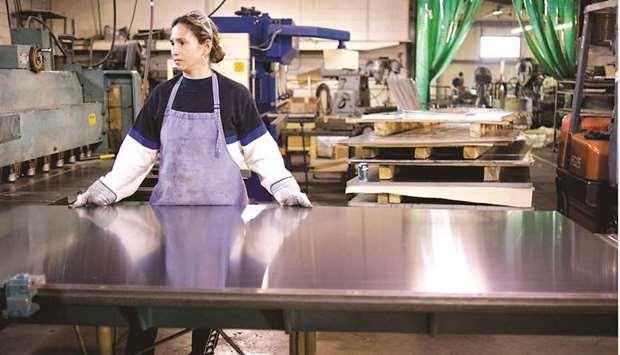U.S. manufacturing activity slowed slightly in January, while a measure of prices paid by factories for raw materials and other inputs jumped to its highest level in nearly 10 years, strengthening expectations inflation will perk up this year.
The moderation in activity reported by the Institute for Supply Management on Monday reflected a flare-up in COVID-19 infections, causing labor shortages in factories and their suppliers, which the ISM said “will continue to restrict the manufacturing economy expansion until the coronavirus crisis abates.” Manufacturing and housing are anchoring the economic recovery from the pandemic.
“It’s another reminder, not that we need one, the vaccine rollout has a long way to go before COVID loses its place as the biggest risk to economic growth,” said Chris Low, chief economist at FHN Financial in New York.
The ISM’s index of national factory activity fell to a reading of 58.7 last month from 60.5 in December. A reading above 50 indicates expansion in manufacturing, which accounts for 11.9% of the U.S. economy. Economists polled by Reuters had forecast the index at 60 in January.
The ISM revised data going back to 2012. Sixteen industries, including electrical equipment, appliances and components, machinery, primary metals and chemical products expanded in January. Printing and related support activities, and petroleum and coal products industries contracted.
Manufacturing has been driven by strong demand for goods like electronics and furniture as 23.7% of the labor force works from home because of the coronavirus outbreak. But spending on long-lasting manufactured goods fell for a second straight month in December, government data showed on Friday.
With the distribution of vaccines to fight the coronavirus expected to broaden and accelerate, spending on services is likely to pick up by summer. That could cause a slowdown in manufacturing activity from current levels. Still, a contraction is unlikely as customer inventories fell to an 11-year low in January. Factory stocks are also very lean.
A separate report on Monday from the Commerce Department said construction spending increased 1.0% to $1.490 trillion, the highest level since the government started tracking the series in 2002. That followed a 1.1% jump in November.
Stocks on Wall Street were trading higher following a sharp sell-off last week. The dollar rose against a basket of currencies. U.S. Treasury prices were lower.






